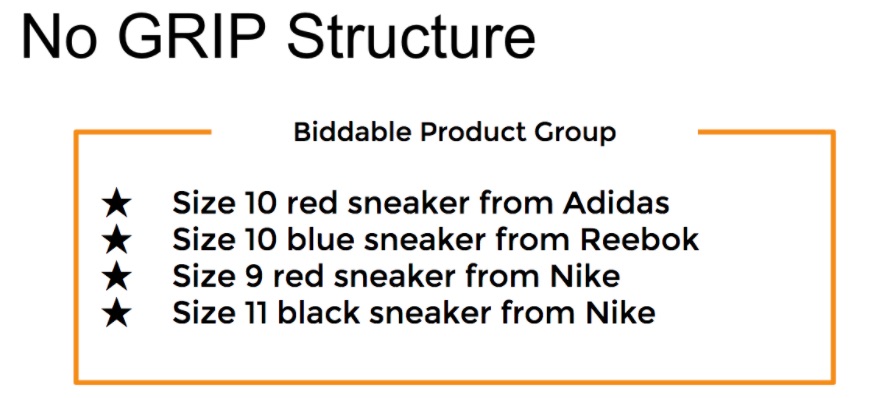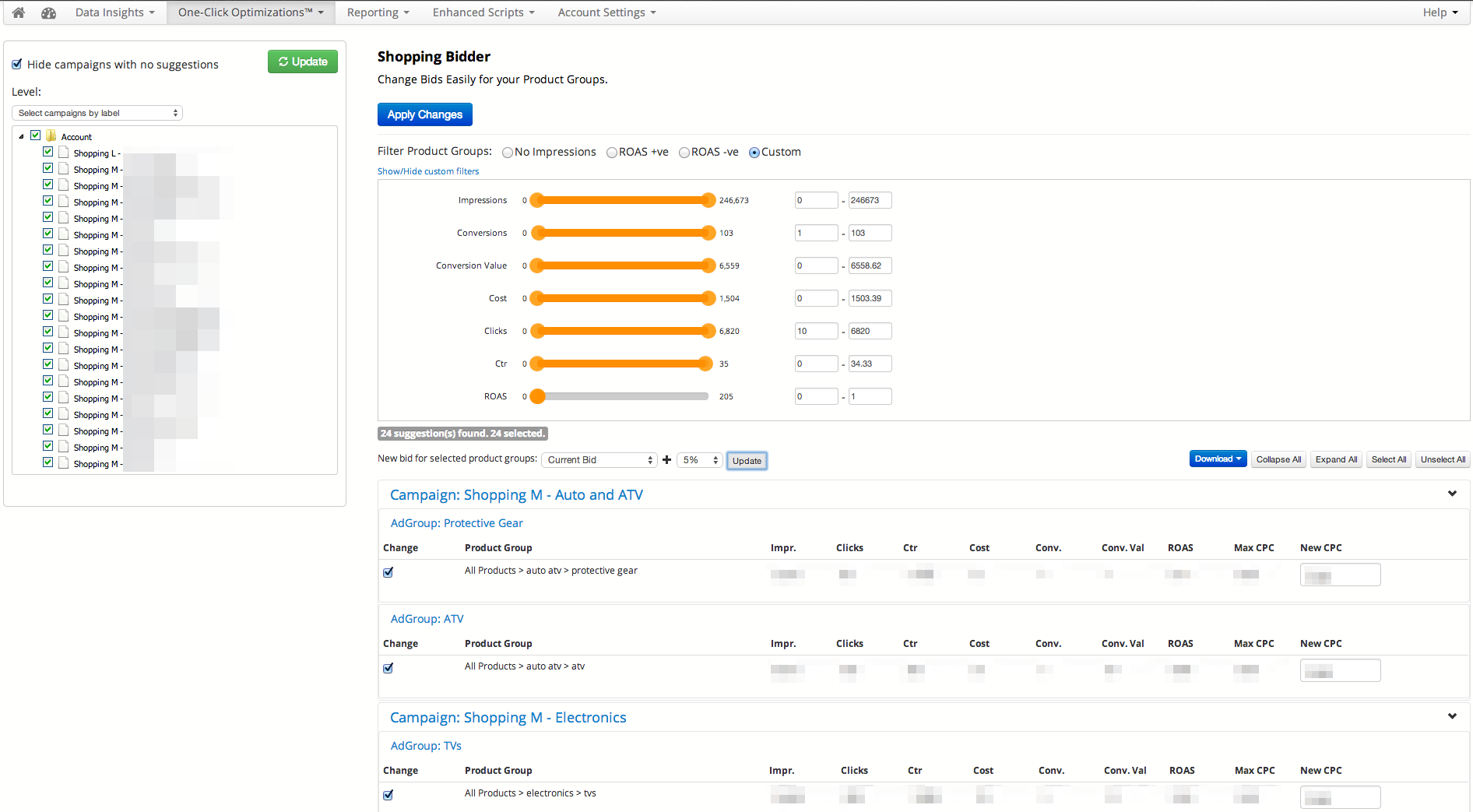I’m the engineer behind our recently announced Shopping Attribute Bidder and I would like to show you some of the benefits you can achieve by deploying a more granular structure for your product groups in shopping campaigns.
How bids work for Shopping Ads
In shopping campaigns, you set bids for product groups. However, not all product groups can get a bid. Why is that? It’s because product groups can be subdivided and the bid can only be set at the final level of subdivision.
The AdWords API documentation explains this fairly well.
Here’s an example where products have been segmented (subdivided) along a few dimensions: first by the category (‘electronics’ or ‘toys’). Electronics are subdivided further by ‘brand’, and toys are not subdivided further. The right column in green represents all other product categories and is called “Everything else” in AdWords. This is further subdivided by ‘used status’.
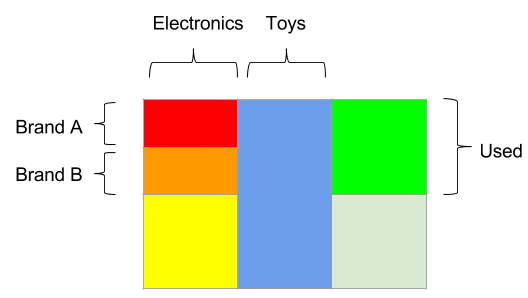
This segmentation can be shown as a tree:
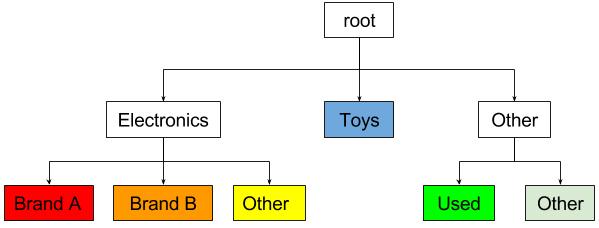
What’s important here is that in the AdWords interface, each division is called a ‘product group’ but only the ones at the lowest level (the colored ones in the image above) can have a bid. We’ll call these ‘biddable product groups’.
Why AdWords has non-biddable product groups
So why does AdWords even have non-biddable product groups? It’s because the way they let advertisers do the subdivisions in the interface requires one subdivision at a time. In creating the tree, each level has to be subdivided individually.
Doing this is actually really really painful if you just want to build a logical division, for example, splitting all products by category 0, and then splitting all those by brand. AdWords supports 7 levels of subdivision but in the interface anything more than 2 levels is extremely manual.
If you need help with that, check out our super fast Shopping Campaign Builder tool. We’ve had advertisers create hundreds of ad groups and thousands of granular product groups in just minutes with it.
How to set unique bids per product (SKU) in Shopping Ads
How granularly you can set bids depends on how granular your biddable product groups are. So if you want very granular, SKU level bids, you must place each SKU in its own product group.
It’s a similar concept to SKAGs in search campaigns. SKAG stands for Single Keyword Ad Group. The name I came up with for the equivalent of a SKAG in shopping campaigns is the GRIP structure. GRIP stands for GRoup of Individual Products.
Let me show you two ways to split four SKUs (item IDs) into biddable product groups.
Here’s what your biddable product groups contain in a GRIP structure:
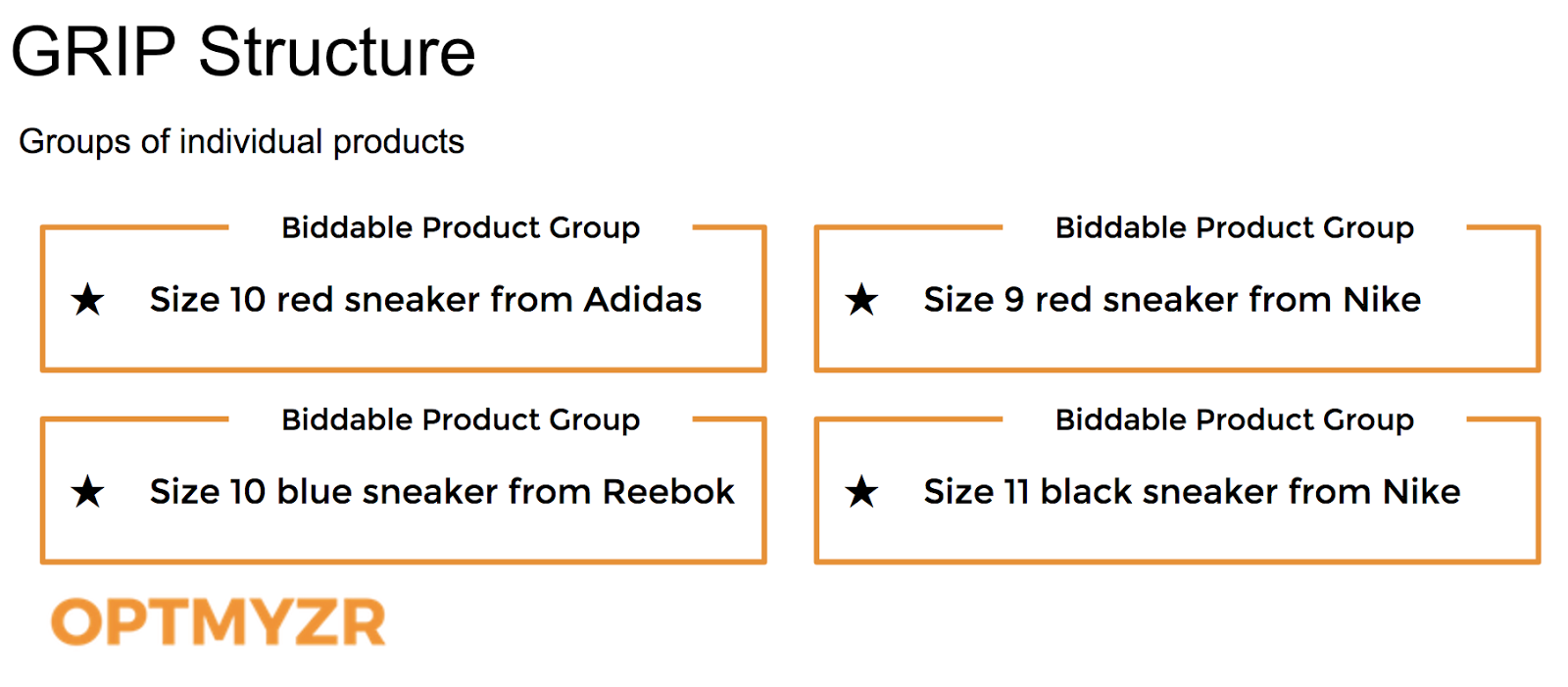
In the GRIP structure above, each individual shoe is placed in a product group. The same four products in a non-GRIP structure below are all grouped together based on a subdivision of something they have in common, in this case the fact they’re all sneakers.
In the GRIP structure, I can set a unique bid for each item I sell. In a non-GRIP structure, the bid for all four sneakers has to be the same.
Why the GRIP structure is good for bidding
With the Shopping Attribute Bidder tool I created, we can analyze AdWords performance for any attribute we have included in our Google Merchant Feed. For example, we could analyze how shoes of different sizes perform. Here’s what we might see in Optmyzr:
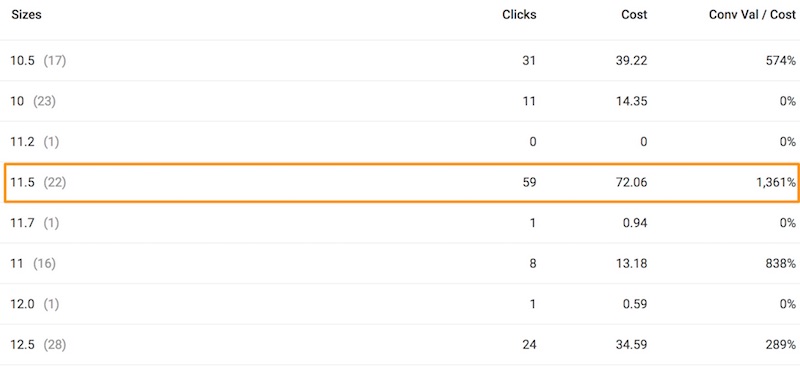
As you can see, size 11.5 shoes have an ROAS of 1361%. Size 10 shoes on the other hand haven’t sold anything so their ROAS is 0%.
In a non-GRIP structure, this useful insight cannot be acted on because shoes of different sizes exist in the same biddable product group.

In a GRIP structure, on the other hand, we can act on this insight:
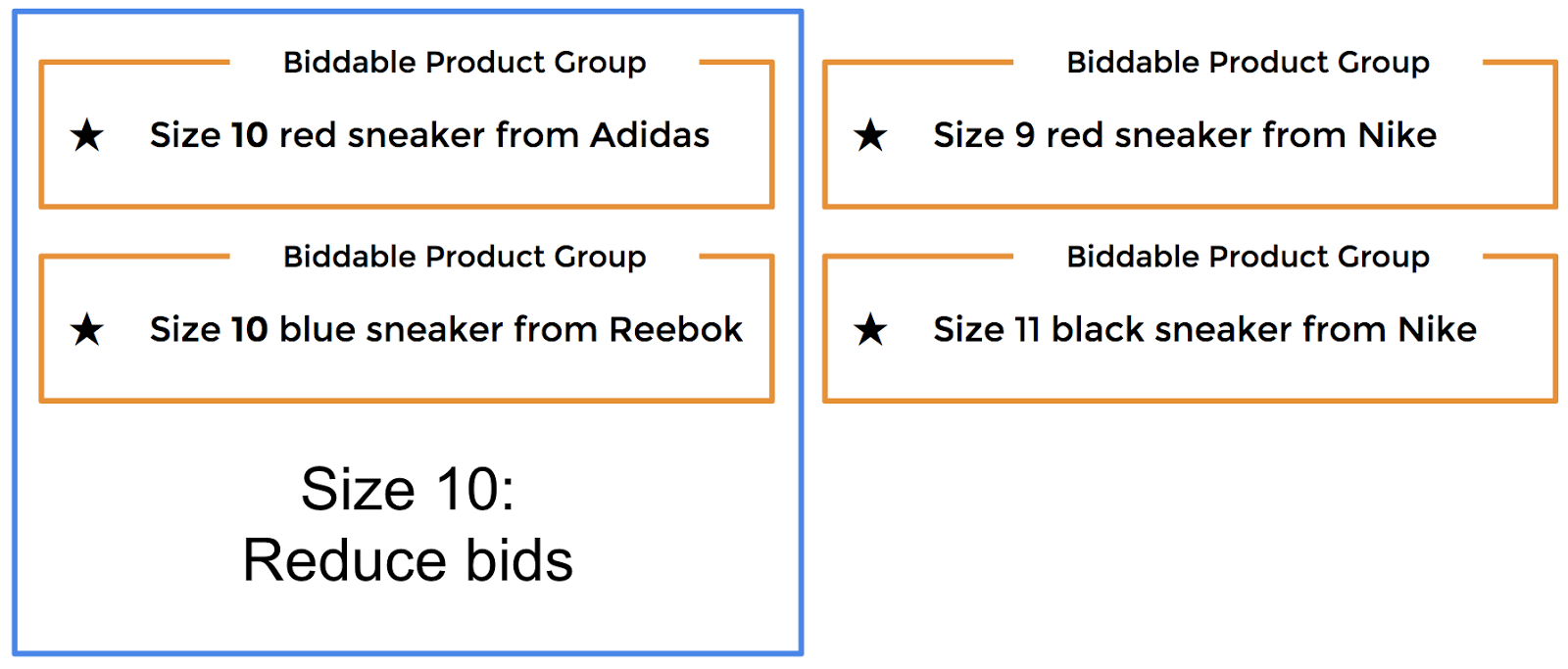
What’s really cool is that your structure no longer limits your ability to act on insights. If you want to analyze performance by brand or color, that would work just as easily. Here we use the GRIP structure to change bids for things that are red:

And here we change bids for products from a certain brand:
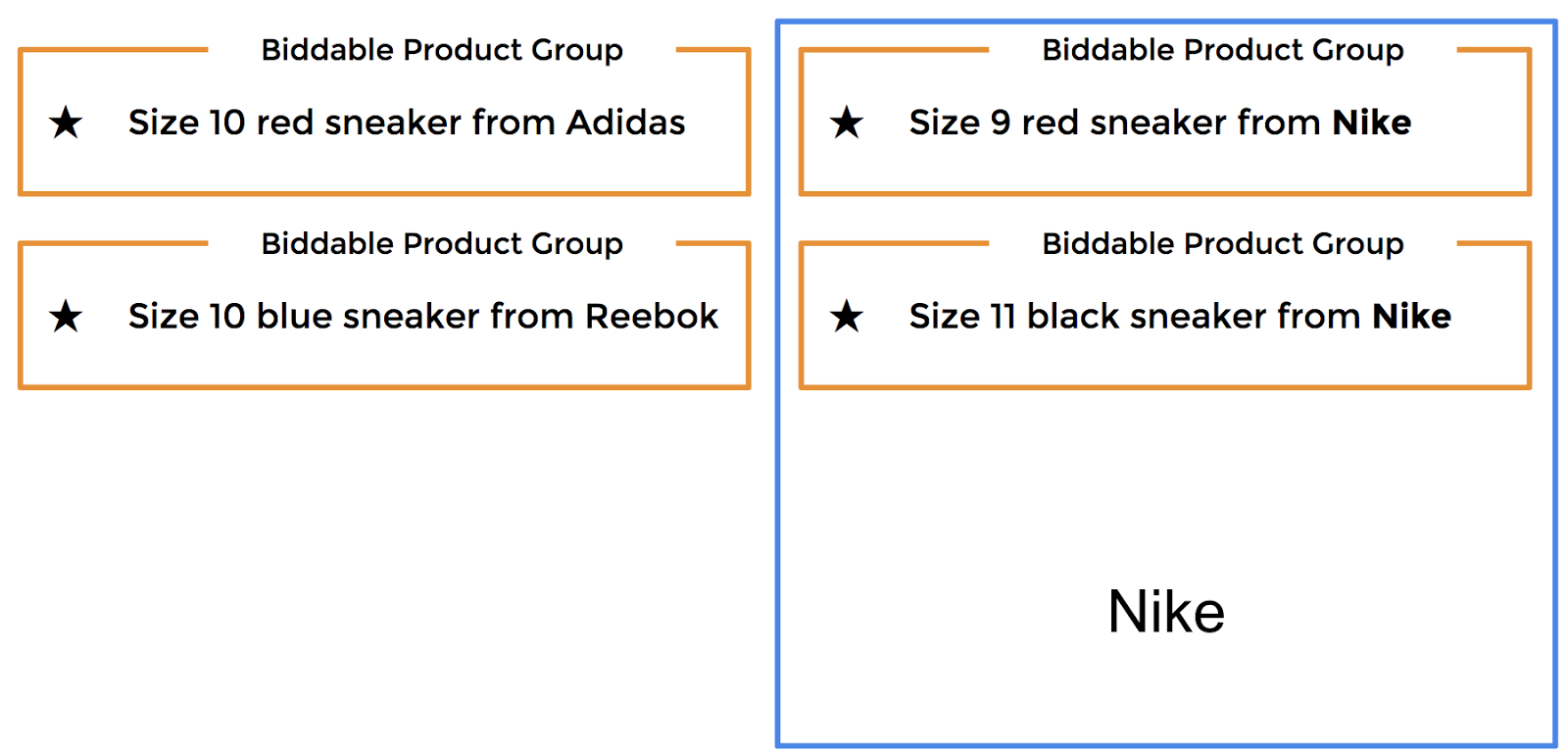
Not only can you now analyze data using attributes not available in AdWords (we do this by merging your merchant feed with the AdWords reports in our systems), you can even combine attributes to find more granular insights.
Changing bids for GRIP ads
It was important for us to give you the ability to act on insights right from the page where you got the insight. Here’s what the Shopping Attribute Bidder tool looks like when you’ve found an insight that you want to use for a bid change:
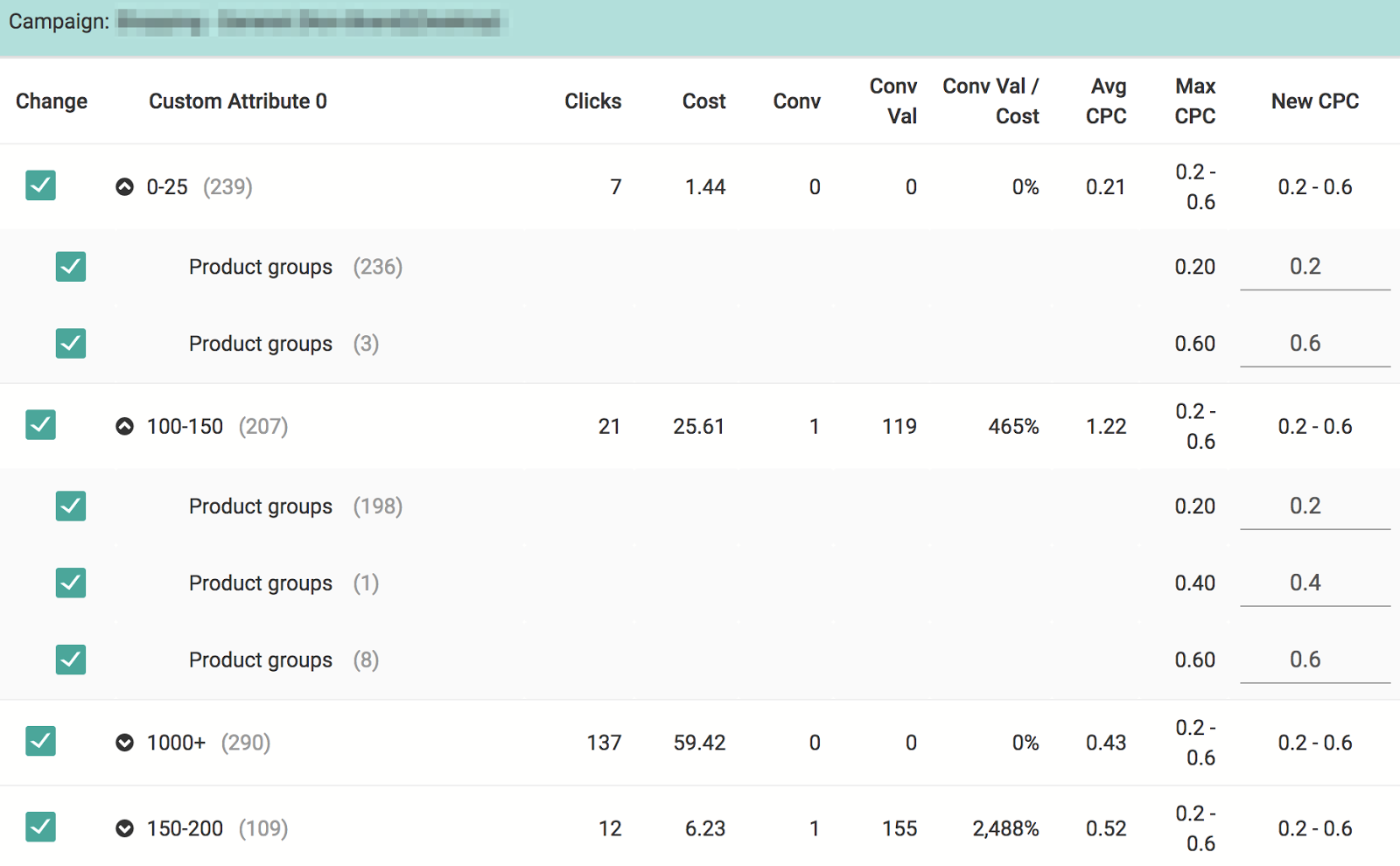
The analysis here looks at price ranges of products, something the advertiser has entered using a custom attribute. We can see performance data for each attribute. When products with the same attribute have different bids, we show each bid so that you can raise or lower them all by a percentage or a fixed amount.
Conclusion
I see a lot of e-commerce advertisers with sub-optimal product groups. That’s why I’m excited about the fact that with Optmyzr you can now more easily create a great shopping structure and use that to improve bid management. Try it out and let me and the team know what you think…





